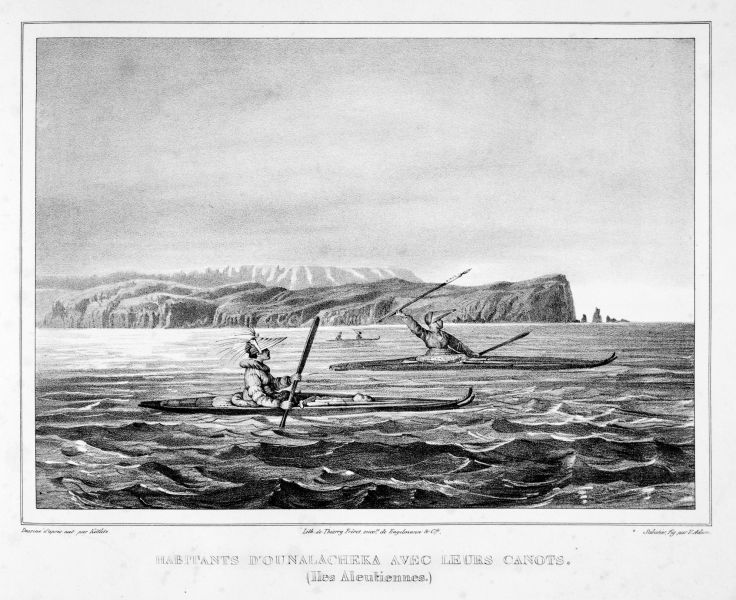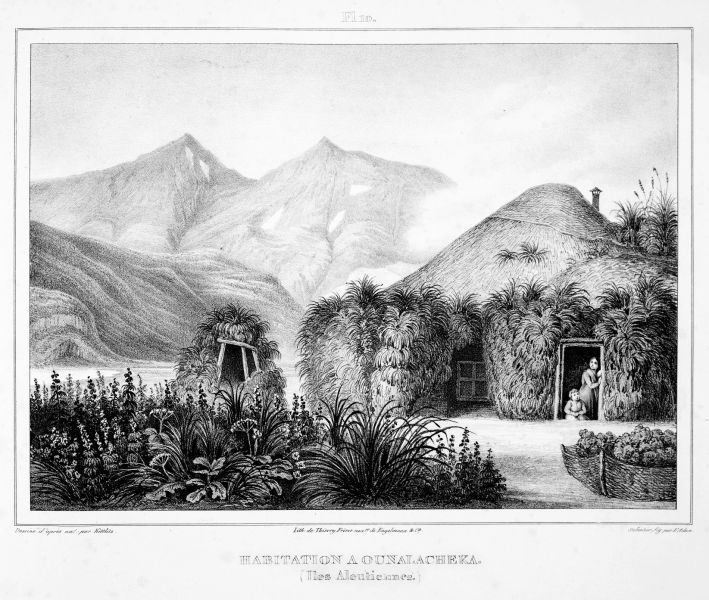Kittlitz, Friedrich Heinrich Freiherr von (1799-1874)
Friedrich Von Kittlitz was born in 1799, in then Prussian city of Breslau (today’s Wrocław, Poland) in the family of a Prussian infantry captain. At the age of four Friedrich developed a passion for ornithology and learned to sketch birds with great skill and accuracy – a talent, which remained one of his major professional assets for the rest of his life. His education at the Latin Grammar School in Oles (Olesnica, Poland) was interrupted by the Napoleonic Wars. At the age of thirteen he joined his father’s battalion as a volunteer, and three years later marched into Paris with the victorious army. The decision to join the army evidently had more to do with family tradition than with young man’s goals and interests, and he regretted it later, but his war experience put him on a military career path, and he remained in service until 1825.
In his spare time he continued ornithological observations, compiling descriptions and illustrations of all the birds he could find during his military service in Germany. Kittlitz’ achievements in this field and his family connections helped him to obtain permission to join the Russian Expedition to the Far East on the corvette Seniavin under the Captain F. P. Litke. His task was to create a collection of ornithological samples and illustrations. The expedition’s overall goal was to continue Russian round-the-world geographical discoveries and explorations and help supply the Russian colony in Alaska.
On August 20, 1826, the Seniavin left Kronshtadt, Russia, and sailed for Alaska via Cape Horn, arriving in Sitka on June 19th of the following year. After a month in the colony’s capital, the expedition then set sail for Unalaska, Pribilof Islands, St. Matthew Island and Petropavlovsk. Kittlitz evidently was not completely satisfied with the time he was allowed to spend on his studies, and took extended shore leave when the ship arrived to Petropavlovsk in June of 1828 to explore the interior of Kamchatka. The expedition sailed home in November of the same year, returning to Kronshtadt on August 25, 1829. Kittlitz, however, had left the ship in Le Havre, traveling overland to St. Petersburg, which he hoped would be faster. Delayed by sudden illness, he arrived in the Russian capital after the reception at which Tsar Nicholas I distributed generous bonuses to expedition members, and received nothing. The Russian Academy of Science offered Kittlitz 2,500 silver rubles a year to support the publication of his materials, but his search for academic position remained fruitless, and he relocated back to Germany.
In 1830, Kittlitz joined Eduard Ruppell’s expedition to Abyssinia, but came down with a fever in Cairo and returned to Germany, where he dedicated himself to organizing the materials from the Seniavin expedition. Kittlitz’ zoological discoveries were published in various journals and Litke’s account of the voyage published in Russian (1834-1836) and in French (1835-1836). Some of his sketches were made into lithographic plates illustrating these publications as well as an Atlas accompanying the French edition. The latter evidently had black-and-white and colored versions. Litke stated that during the Seniavin expedition Kittlitz produced 200 images, all of which were deposited at the Museum of the Imperial Academy of Sciences, nowadays Museum of Anthropology and Ethnography (Kunstkamera), St. Petersburg, Russia. Some of these images are currently in the collection of the Archive of Russian Academy of Science in St. Petersburg, Russia. Like other Russian expedition artists, Kittlitz retained a certain amount of his artistic works, and took them to Germany. Twelve of his water color images of Kamchatka are, for instance, currently in the private collection of professor Hans Engländer.
Frustrated with the inadequate – to his taste – quality and accuracy of images published in Litke’s edition, Kittlitz learned the art of engraver to produce plates for his scholarly books Views of Vegetation in the Western Sudeten, Nature Scenes from Kamchatka and Memorable Moments of Travelling to Russian America, Micronesia and Kamchatka, which significantly delayed these volumes’ publication. The Memorable Moments were published nearly thirty years after the Seniavin’s voyage, and as a result, did not gain much deserved recognition.
A passionate ornithologist, Kittlitz evidently did not have much interest in tarting family untill later in his life. He married only in 1845 and had three children with whom he stayed close, especially after his wife's passing. He died in Mainz on April 10, 1874.
Sources and literature:
Engländer, Hans
Landshafsaquarelle als Reiserichte des Naturforschers Friedrich Heinrich von Kittlitz, Natur und Museum 93 (11), 1963, 443-448.
Kittlitz, Friedrich Heinrich Freiherr Von
Denkwurdigkeiten ein Reise nach dem russischen Amerika, nach Mikronesien, und durch Kamtschatka Gotha: Perthes, 1858
Moessner, Joan
Extract from Friedrich Heinrich Baron von Kittlitz Denkwurdigkeiten ein Reise nach dem russischen Amerika, v. 1, 184 to 303 (Gotha, 1858) in Frederic Litke, A Voyage Around the World 1826-1829, Limestone Press, Kingston, Ontario, 1987, 121-190.
Shtreker, Liza
Baron Genrich von Kittlitz, nemetskii dvoryanin na sluzhbe Imperatorskoi Rossiiskoi Akademii Nauk. Kultury I Landshaft Severo-Vostoka Azii, Erich Kasten, editor, 2010.








